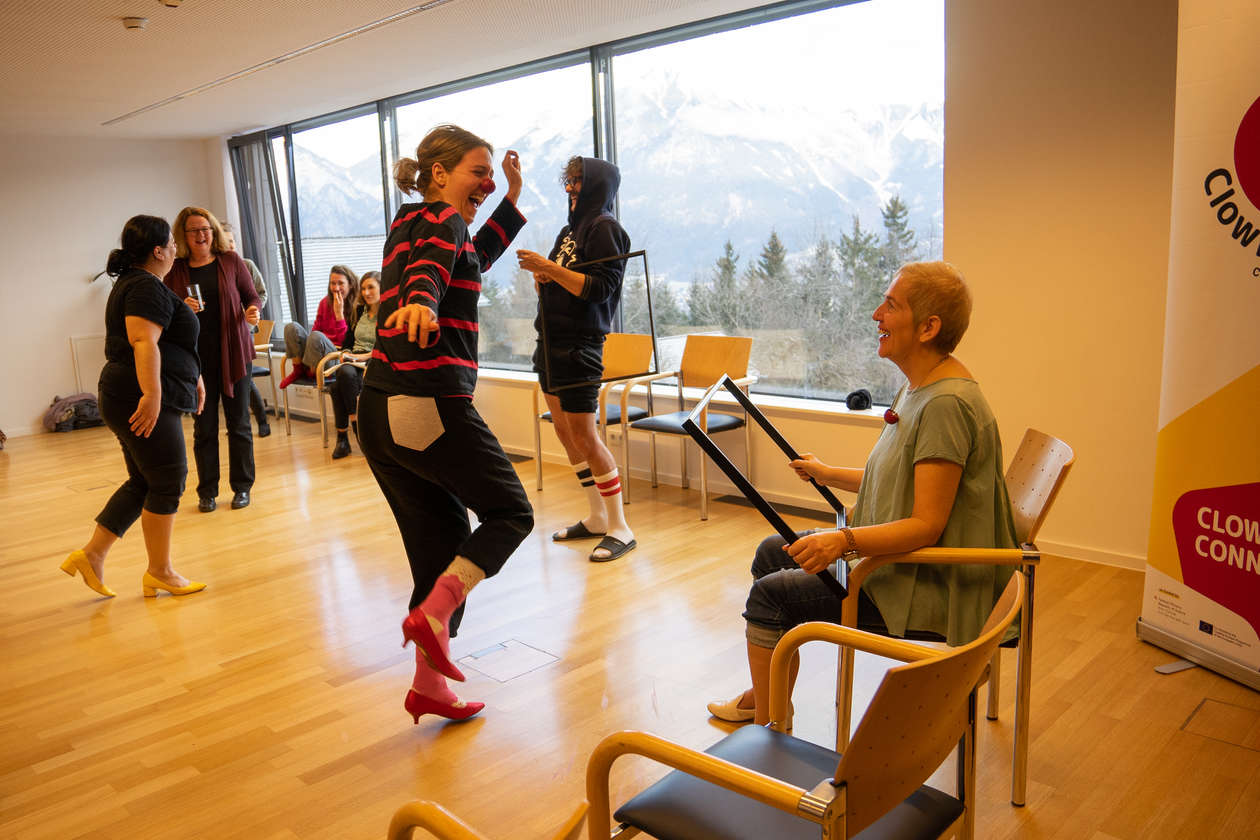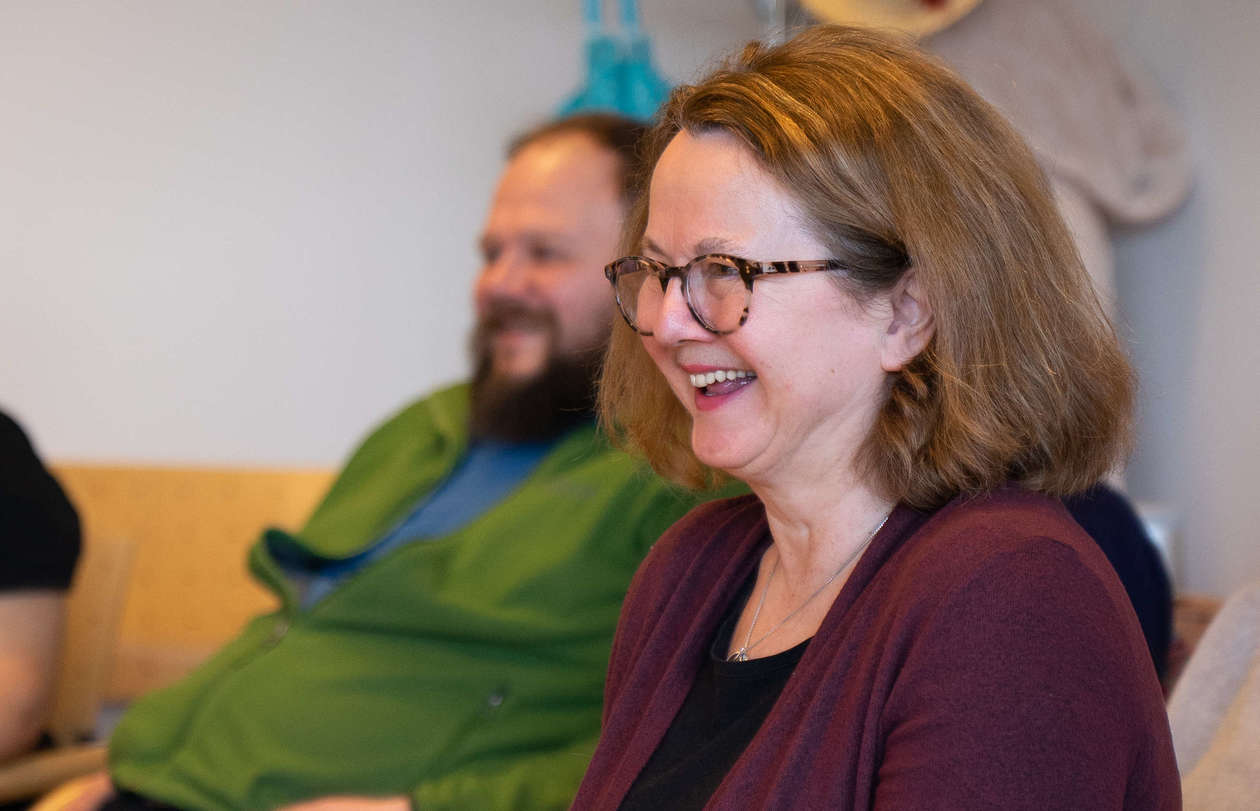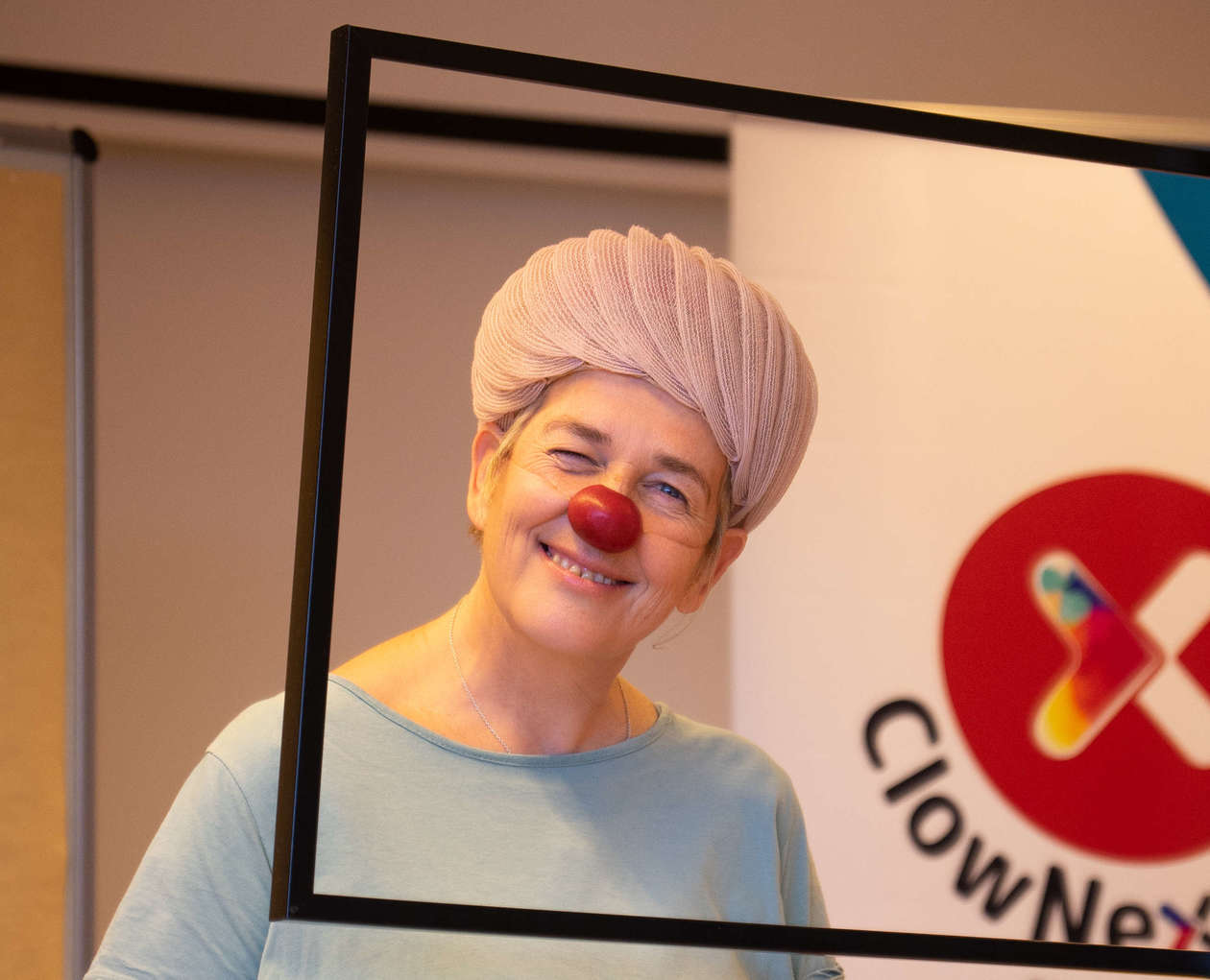Read in German
Wednesday morning, 9 am at the Grillhof educational institute in Innsbruck, Austria. It is the third day of the “Clownexus” Artistic Laboratory.

ClowNexus is a three-year project (November 2020-October 2023) in which eight European healthcare clown organisations explore how clowns and humor can build and facilitate social connections and better communication with people with dementia and children on the autism spectrum.
From 16 to 20 January 2023, the third international artistic laboratory took place in Austria (Tyrol) with a focus on communication with people with dementia. Clowns from six European countries came together to exchange ideas and work together with experts such as Magdalena Schamberger, a pioneer and specialist in the field of artistic work with people with dementia.

Magdalena Schamberger enters the room this morning with the words “Nice to see you again. Firstly, make yourselves comfortable.”, she says, starting a meditation. “Now, imagine the Australian sun is shining on you,” she continues, inviting all participants to stretch out towards the sun and enjoy the warm feeling of the sun’s rays on their skin despite the cold winter outside.
“Now the sun should also be reaching the backside of your neck and all down your back.” So, sitting on their chairs, the clowns lean far forward, some with their heads almost reaching their legs, their hands either hanging loosely or resting on their knees. When everyone is in position, Magdalena Schamberger asks the group to open their eyes. “Please take a good look at what you are seeing in front of you.” In this position, the participants see their feet, knees, a very limited area. “And that is the visual area that very many elderly people with dementia have almost exclusively in front of them.” The room becomes quiet, this statement and realisation provokes reflection. “With this illustrative exercise, I want to get the clowns attuned for our workshop today,” Magdalena Schamberger explains.

Working in Frames
And that’s what it’s going to be about today: the limited field of vision of people with dementia and how clowns can use it and “play” with it in the best possible way.
So, the clowns come together in pairs. One person holds the frame and looks through it while the other does a little foot show in the now visible area. The creative artists come up with all kinds of ideas for this: they put on the most colorful, weird and eye-catching shoes or socks and come up with entertaining foot choreographies. Afterwards, the clowns give each other feedback.
The same principle follows in the later unit, only with a different focus. Now the picture frame is put on the head and shoulder area. Colorful hats, caps, wigs and the like were used, and again, the important rule is: Less is more. “Slow, deliberate movements can be followed and understood much better by people with dementia,” explains Schamberger.
“Clowns are specialists in living in the here and now and that is very important with people with dementia. They retain a sense of creativity, rhythm, and humor despite individual limitations. The clowns can pick up on this wonderfully. The striking red nose leads people directly to the eyes of the clowns, which allows a human encounter to take place. Clowns become allies who share a certain fragility with them,” knows Schamberger, who also teaches as Honorary Professor at the School of Health Sciences at Queen Margaret University in Edinburgh.
The training by Magdalena Schamberger were two very emotional, educational days for all involved, with many new insights and tools that will surely resonate for a long time, not only in the participants but also in care homes in different countries.
The Artistic Laboratory

The five-day retreat also dealt with other topics: The artists and project managers worked together on a “co-creational map”. This tool box is currently being filled with tried and tested approaches by all participating clown organizations and will serve as an inspirational toolbox to share some of the outcomes of ClowNexus once the project ends. A special highlight was the virtual encounter with the former BBC reporter Willy Gilder, who himself lives with dementia and who shared his story and the challenges he faces with the group.






Recent Comments